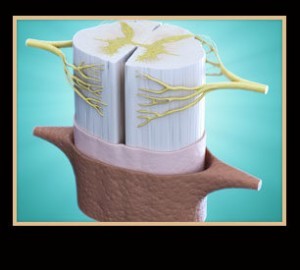Find Relief From the Symptoms of Foraminal Stenosis
 If you are troubled by pain while sitting or walking, or if you experience numbness or tingling in your legs, you may be suffering from foraminal stenosis. This painful condition typically affects the lumbar region of the spine, and occurs when the canals that protect the nerve roots exiting the spinal column become more narrow. With years of experience treating foraminal stenosis, the highly trained doctors at Frisco Spine can quickly identify the cause of your symptoms during an evaluation at our practice. Whether you are seeking diagnosis, or a second opinion, we can discuss your treatment options in order for you to begin the road to recovery. Reach out to us today to schedule an appointment.
If you are troubled by pain while sitting or walking, or if you experience numbness or tingling in your legs, you may be suffering from foraminal stenosis. This painful condition typically affects the lumbar region of the spine, and occurs when the canals that protect the nerve roots exiting the spinal column become more narrow. With years of experience treating foraminal stenosis, the highly trained doctors at Frisco Spine can quickly identify the cause of your symptoms during an evaluation at our practice. Whether you are seeking diagnosis, or a second opinion, we can discuss your treatment options in order for you to begin the road to recovery. Reach out to us today to schedule an appointment.
What is Foraminal Stenosis?
Throughout the cervical, lumbar, and thoracic areas of the spine, nerves exit the spinal column, providing sensation to the rest of the body. These nerve roots are enclosed within small canals, called intervertebral foramen or foraminal canals. If these canals become more narrow, foraminal stenosis develops. The condition is similar to spinal stenosis, but affects a different area of the spine.
Causes and Symptoms
When a nerve root becomes constricted, it may be due to:
- Enlargement of a joint (the uncinate process of a vertebrae)
- Thickening of a ligament
- A bone spur
- Arthritis
- A herniated or bulging disc
The primary symptom of foraminal stenosis is radicular pain, or pain that radiates into an extremity such as the thigh, calf, or foot. The pain is often characterized as deep and steady, and may be reproduced by performing certain activities. The condition can also cause numbness, muscle weakness, tingling, and loss of reflexes.
Diagnosis and Treatment Options
During an examination, our doctors may use magnetic resonance imaging (MRI) or computed tomography (CT) scans to provide a detailed image of the spine and its components. If you have already undergone similar testing, make sure to bring your records to your consultation.
Once your diagnosis of foraminal stenosis has been confirmed, we can begin discussing the best treatment plan for your unique situation. For less advanced cases, our physicians prefer conservative treatment options, which may include anything from over-the-counter pain relievers, physical therapy, or massage. For some patients, however, surgery is the best option to provide long-term relief.
During an endoscopic procedure called a foraminotomy, the compressed passageway can be manually enlarged, effectively relieving pressure on the affected nerve. Our physicians use minimally invasive techniques to surgically treat foraminal stenosis. Using these advanced techniques allows us to restore your health with minimal trauma to surrounding tissue, resulting in a shorter recovery time, less post-operative pain, and minimized risk of complications.
Learn More during an Appointment
We understand that each patient has a unique condition, treatment goals, and concerns, and we will personalize your care to best serve your needs. To learn more about finding relief from your discomfort, and regaining the quality of life you deserve, schedule a consultation at our practice today.





